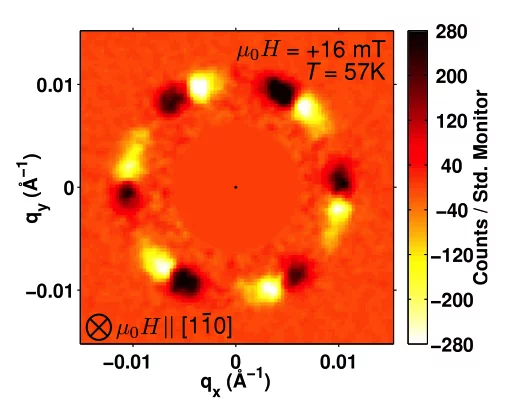Skyrmions are topologically protected magnetic spin 'whirls' that form a hexagonal 2D lattice in non-centrosymmetric magnets. Until recently, skyrmions had only been observed in itinerant metallic alloys such as MnSi, where they can also be manipulated by applied electric currents. Recently however, a skyrmion lattice (SkL) phase was also found in the chiral cubic insulator Cu2OSeO3, thus showing that skyrmion formation is a more general phenomenon to be expected of non-centrosymmetric systems, and that metallicity is not a prerequisite. Since Cu2OSeO3 is furthermore a magneto-electric, an important open question was to discover if the skyrmion lattice could be manipulated by applied electric (E-) fields. In our study, we report small-angle neutron scattering experiments that demonstrate successfully the first manipulation of skyrmions by applied E-fields in an insulator. Using a geometry with μ0H || [1-10] and E || [111], we discover that the effect of applying an E-field is to controllably rotate the SkL around the magnetic field axis in a manner dependent on both the size and sign of the E-field. Our results are an important first demonstration for a microscopic coupling between applied E-fields and the skyrmions in an insulator, and show that the new paradigm for skyrmion manipulation in this material is dependent on the emergent magneto-electric properties of the individual skyrmions.


